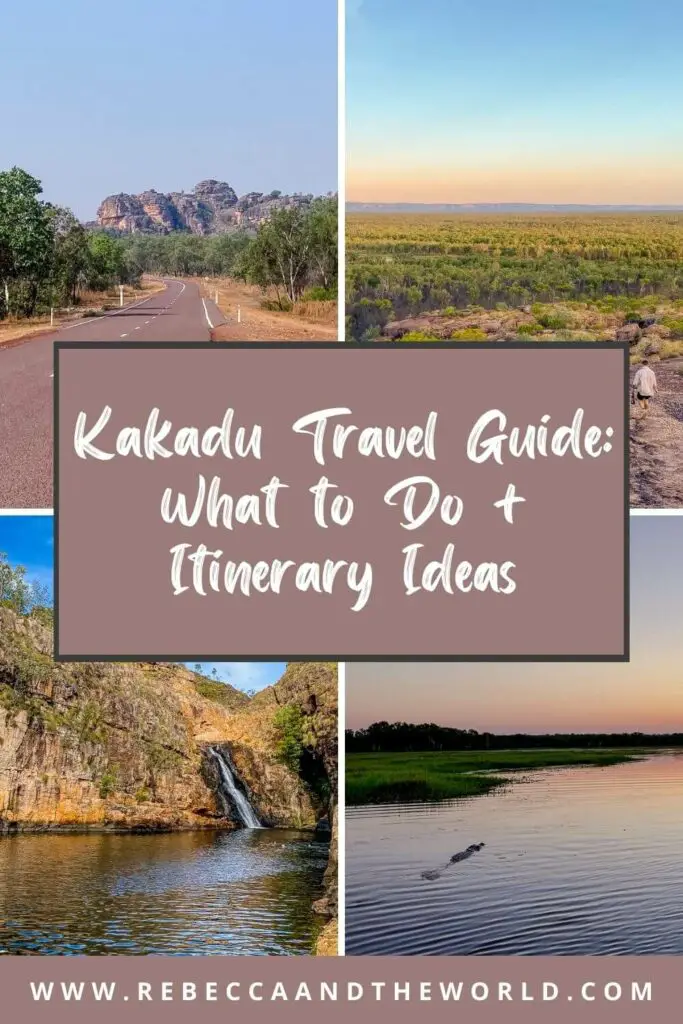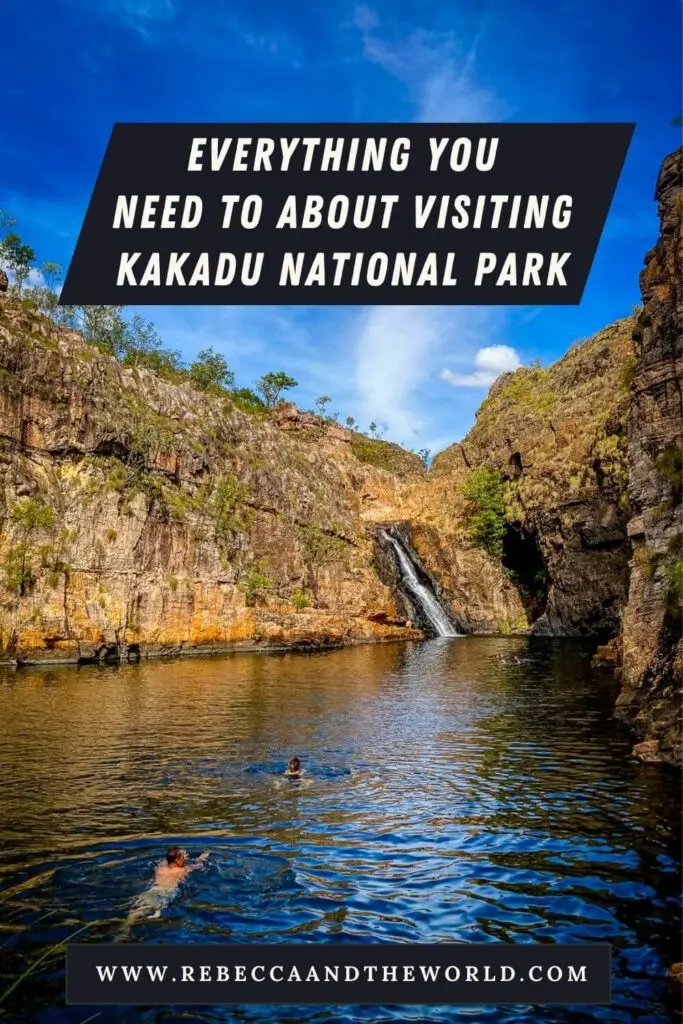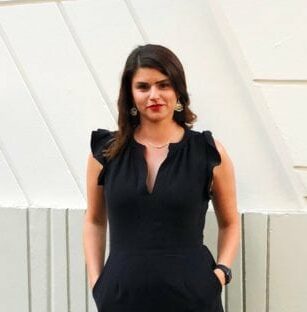Looking for things to do in Kakadu National Park? This guide highlights the very best, along with some suggested Kakadu itinerary ideas.
Kakadu National Park is a vast and diverse landscape located in the Top End of Australia. It’s usually top of visitors’ Australia bucket list experiences, with cultural sites, wildlife, flora, fauna and scenery unlike anywhere else in Australia – or even on Earth.
Not far from the Northern Territory capital city of Darwin, Kakadu is an Australian icon. While it’s no longer Australia’s largest national park (that crown was taken by Munga-Thirri/Simpson Desert National Park in 2021), it’s a HUGE park – almost a third of the size of Tasmania!
Having just spent almost a week in this UNESCO World Heritage-listed site, I’ve pulled together a guide to what I think are the must-dos for anyone visiting Kakadu, as well as some handy travel tips.
There’s no shortage of things to see and do in Kakadu National Park and it can be overwhelming to visit, so I’ve also created some suggested itineraries to help you plan your trip.
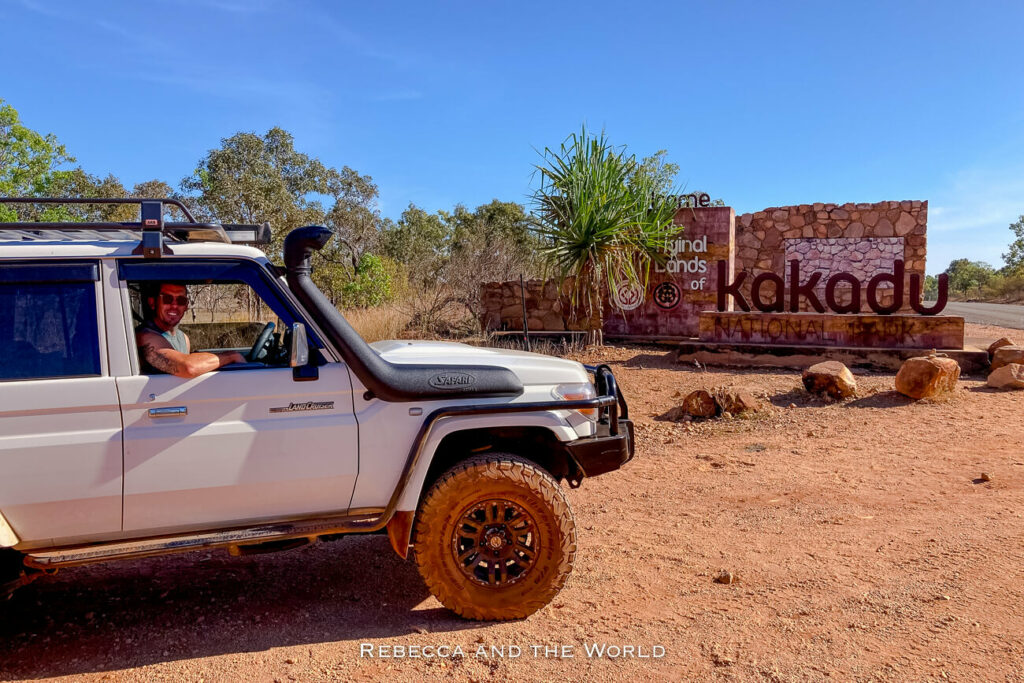
This blog post may contain affiliate links, meaning if you book or buy something through one of these links, I may earn a small commission (at no extra cost to you).
Need to know before you visit Kakadu National Park
Is it free to visit Kakadu National Park?
You’ll need to buy a Kakadu National Park Pass to enter. You can buy this online in advance or at the visitor centre when you arrive at the park.
A 7-day pass costs $40 for adults and $20 for kids.
While you may already have an NT Parks Pass if you’ve visited Nitmiluk National Park or Litchfield National Park, it won’t work here.
Is there mobile phone reception in Kakadu?
Mobile reception is very patchy in Kakadu. We only had reception in Jabiru and at Cooinda Lodge (sometimes). It still surprises me how bad mobile coverage is in remote parts of this country!
Visitor centre
I recommend stopping in at the visitor centre before you head further into the park.
The Bowali Visitor Centre is located at the northern entrance to the park and is a great place to learn about the traditional owners of Kakadu, their culture and the environment.
Make sure you pick up a Kakadu Visitor Guide – it’s the best printed resource about the national park. You can also download a copy online here.
There was a visitor centre at the south entrance, but it’s now closed (although the toilets are usually open). This is why I recommend (if you can) entering Kakadu from the north rather than the south. But, of course, that’s not always possible.
Plan your Kakadu visit
As I’ve already said – and will say again – Kakadu is huge. You really do need to plan your visit around key sites, otherwise you’ll be driving a lot! This may mean you’ll need to change accommodation throughout your visit so that you can be closer to different sections of the park.
I’ve got some itinerary ideas later on in this article to help you with this.
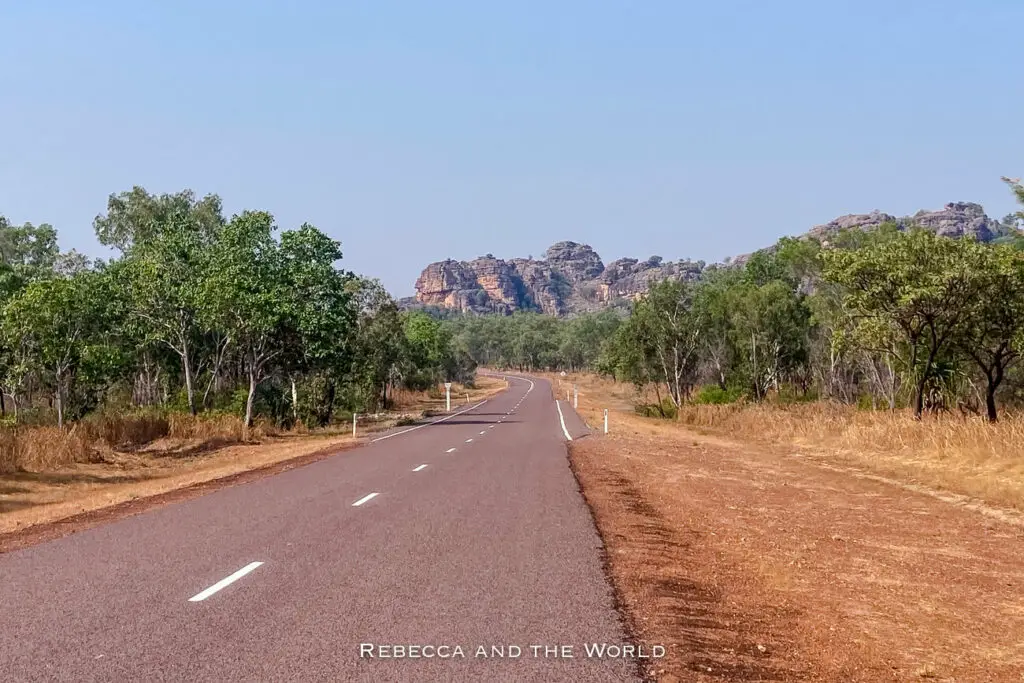
Is Kakadu open?
Parts of Kakadu can close – whether that’s due to damage, flooding or something else. Check the latest status of Kakadu attractions online here.
Map of Kakadu National Park
Everything I mention in this article is laid out on this Kakadu National Park map.
Things to do in Kakadu National Park
As I’ve already said, Kakadu is huge, so I’ve broken this article up into the 7 regions of the national park. This will help you plan your days around activities in each region, so you’re not driving back and forth.
These 7 regions are:
- South Alligator region
- Jabiru region
- East Alligator (Erre) region
- Burrungkuy (Nourlangie) region
- Yellow Water region
- Jim Jim / Twin Falls Gorge region
- Mary River region
South Alligator region
If you’re coming from Darwin to Kakadu, the South Alligator region is where you’ll enter the national park.
1. Mamukala Wetlands
Mamukala Wetlands is a twitcher’s heaven. Head to the observation platform to see hundreds of birds, including magpie geese, ducks and herons, feeding in the wetlands.
If you have extra time, take a walk along the boardwalk to learn about Aboriginal use of plants and animals in this area. The 3-kilometre trail takes a leisurely 1-2 hours to complete.
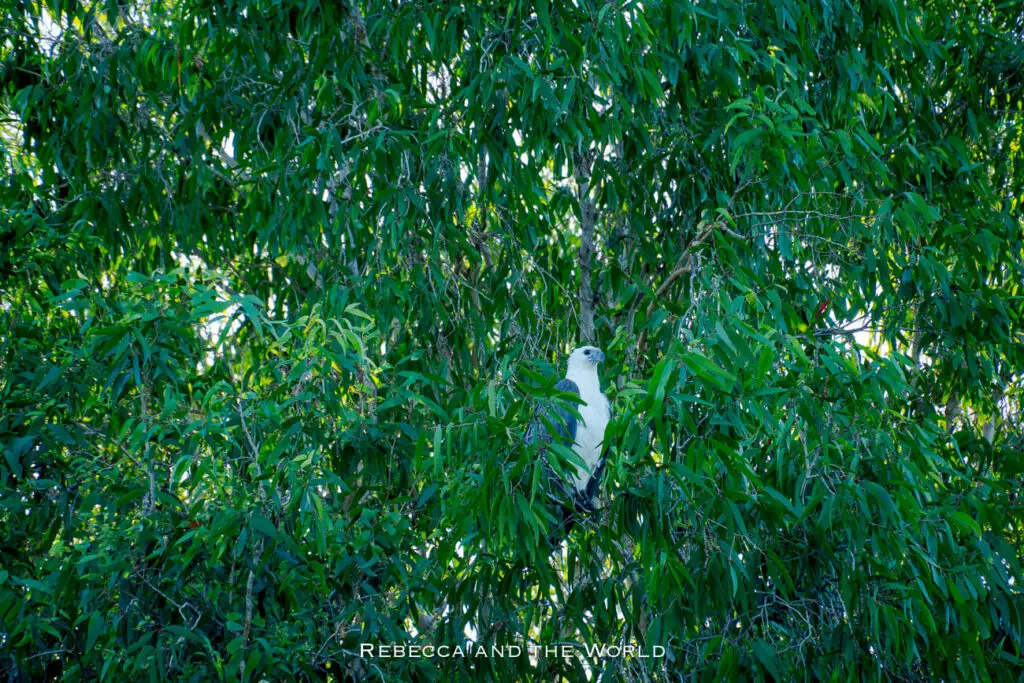
2. Boating/fishing
The South Alligator area is also a popular spot for fishing and boating for intrepid travellers. There are a few boat ramps to access the South Alligator River, some of them remote and only accessible by 4WD.
Fun fact: Why alligator and not crocodile? When the Kakadu area was first visited by Europeans, they mistakenly thought the reptiles were alligators. The rivers were named East Alligator River and South Alligator River. But as we of course know, they’re actually saltwater crocodiles. Despite that, the original alligator name has stuck.
Jabiru region
The main town of Kakadu is called Jabiru and it has a supermarket, petrol station, mechanic, pharmacy and post office.
There are also a few hotels here, so it’s a good spot to base yourself at the beginning of your visit to Kakadu.
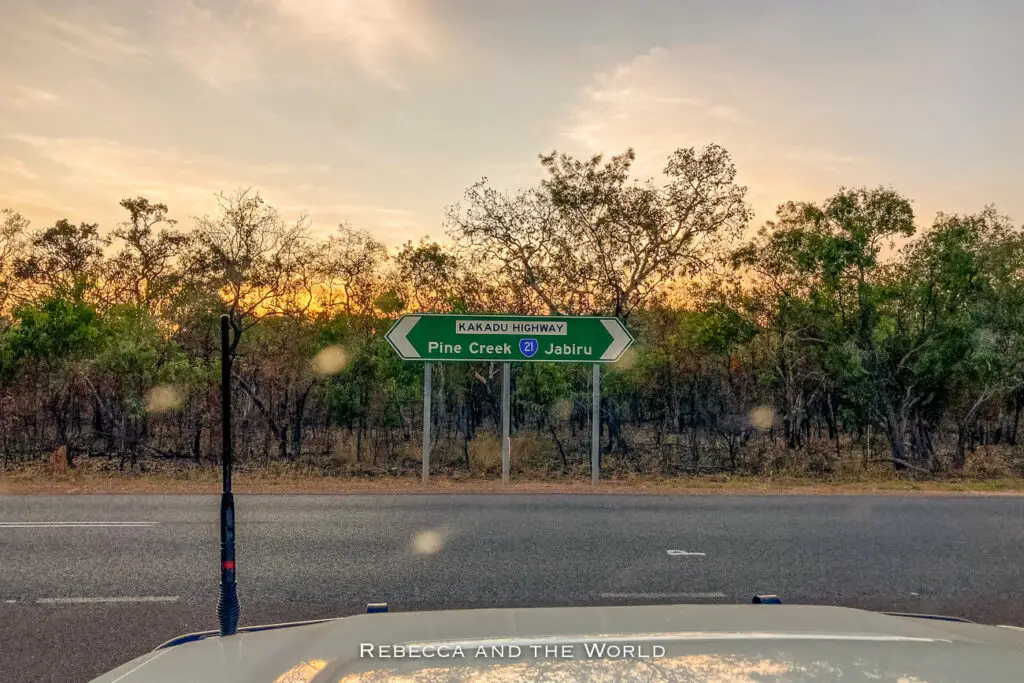
3. Bowali Visitor Centre
As I mentioned earlier, the Bowali Visitor Centre should be your first stop in Kakadu. Pick up a Kakadu Visitor Guide and chat with the rangers about what’s open and closed. They have great tips about the best time to visit certain spots for views and lighting.
If you haven’t bought your Kakadu park pass online, you can buy one here.
There are some interesting exhibitions about the flora and fauna of Kakadu and the Traditional Owners of the area, so spend some time here learning more about the national park
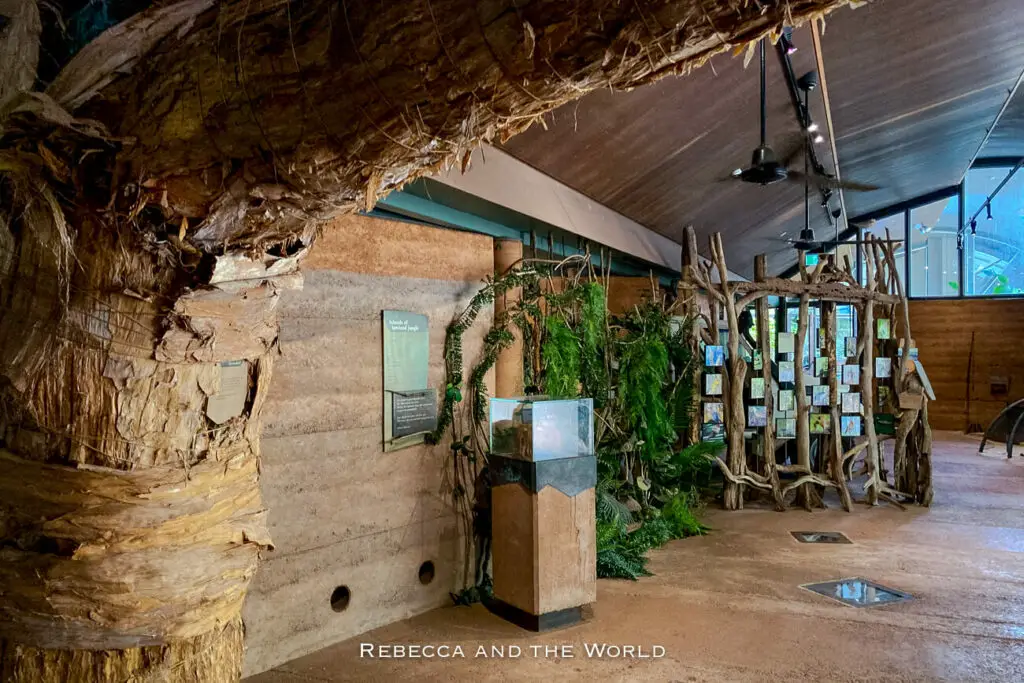
4. Bowali Track
Start your time in Kakadu by tackling a smaller hiking trail. The Bowali Track is a 4-kilometre return that takes you through woodlands. Keep an eye out for birds, wallabies, and maybe even a buffalo.
The trail begins opposite the Mercure Kakadu Crocodile Hotel – a hotel that’s shaped like a croc!
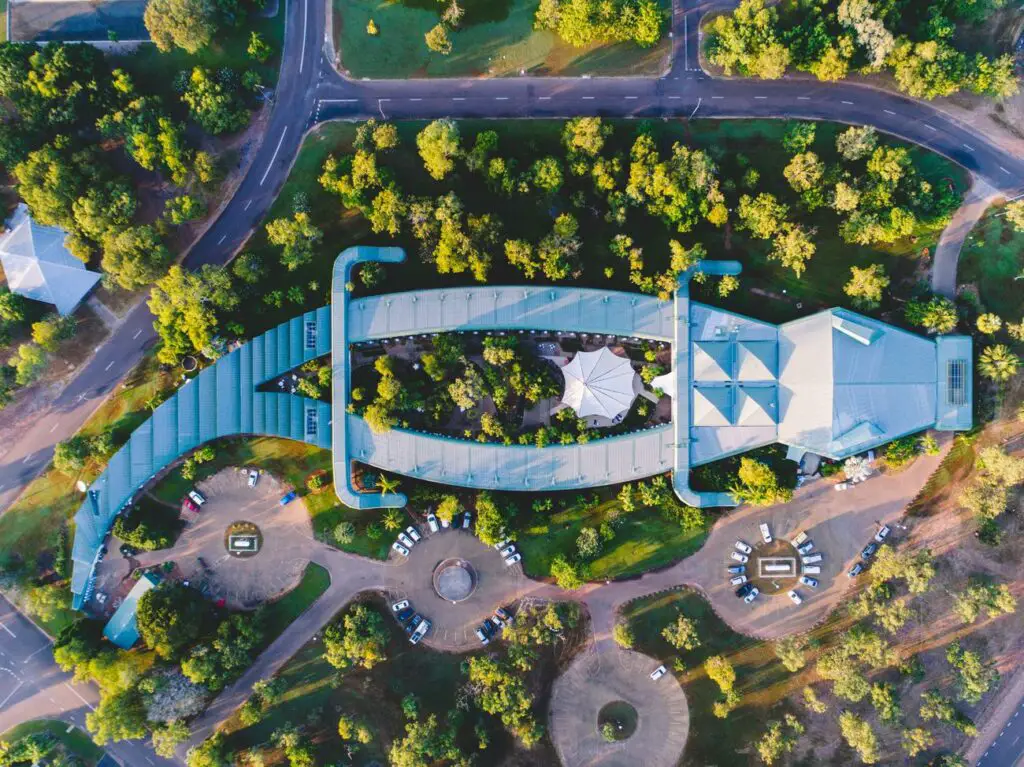
5. Marrawuddi Arts & Culture
Owned by the Mirarr Traditional Owners, the Marrawuddi Arts & Culture centre is a great place to see and buy authentic Indigenous art and crafts from across Kakadu and West Arnhem Land.
You can find everything here from bark paintings to weavings and sculptures, screen-printed T-shirts, jewellery and artworks on canvas.
There’s a studio space here, too, so you can often see artists at work creating intricate and beautiful artworks and designs.
The cafe here has good coffee – and it’s open 7 days.
East Alligator (Erre) region
The East Alligator River is the boundary between Kakadu and Arnhem Land.
6. Ubirr
One of the absolute highlights of visiting Kakadu is watching the sun set from Ubirr.
At the top of this rock formation, from the Nadab Lookout, you’ll find incredible views stretching out over the vast Kakadu floodplains all the way to Arnhem Land.
Follow the track to the rocky lookout, stopping to see Aboriginal rock art sites. There are several galleries with artworks from different time periods. The oldest paintings here date back thousands of years.
We took a free guided tour led by one of the Indigenous rangers. It was interesting, although our guide seemed far more focused on cracking jokes than sharing useful information. It was worth it, though, as we did learn a few things along the way.
The trail is flat but you’ll need to climb up the rocks to get to the lookout.
This is one of the most popular things to do in Kakadu and it gets really busy here at sunset, so come early to get a good spot. Bring a picnic (no alcohol allowed).
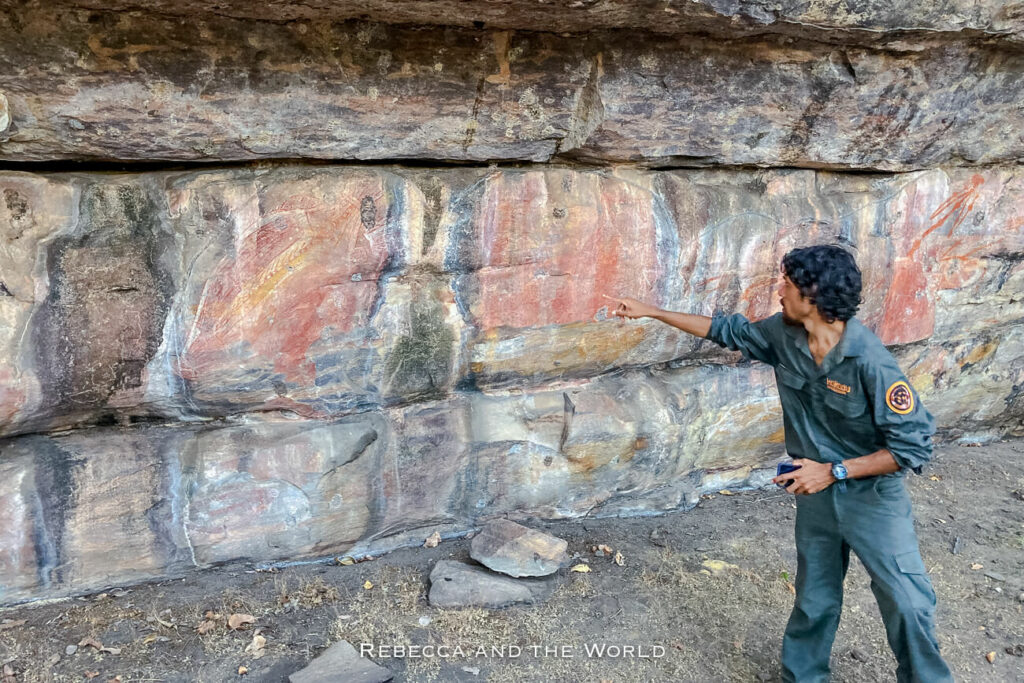
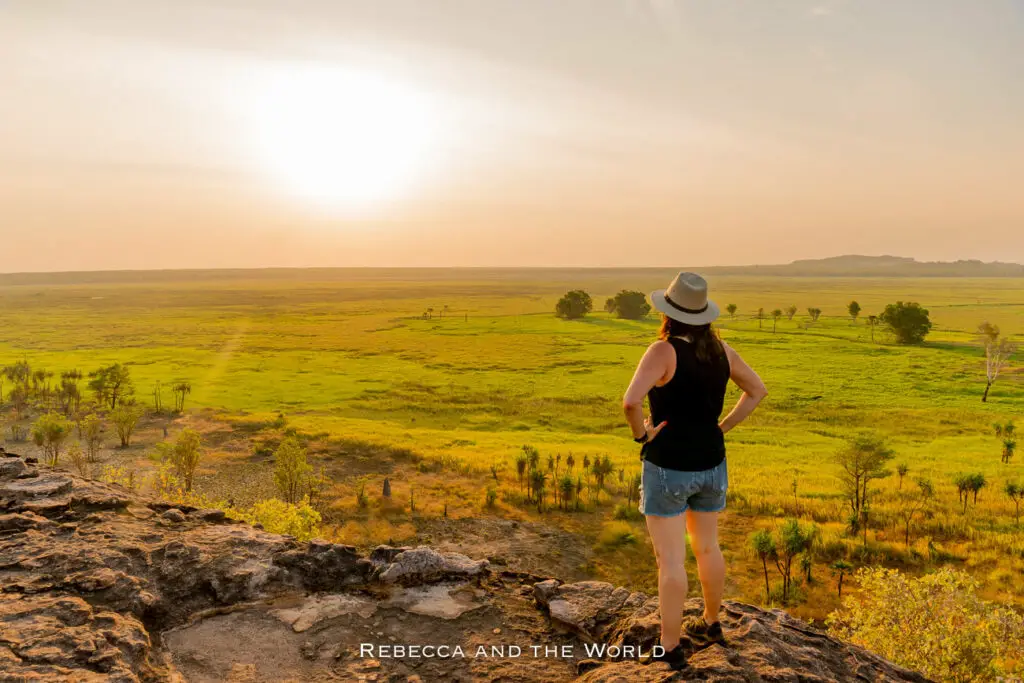
7. Cahills Crossing
If you want to see some crocodiles, Cahills Crossing is the place to be. Located at the East Alligator River, this crossing is a popular spot for fishing and also for watching saltwater crocodiles in their natural habitat. There’s a spacious viewing platform that’s mostly shaded.
This is a tidal river, so time your visit here for high tide when the crocodiles come looking for fish.
I couldn’t believe how many crocs we saw floating down the river or surfacing right by the crossing – and we weren’t even there at high tide.
We saw a few cunning crocs making a beeline when someone fishing reeled in a catch.
If you’re here in the evening during the dry season, there’s an informative talk – led by a ranger – about Kakadu and its resident crocodiles.
Lots of people cross here by car for fun and then turn back. You need a permit if you’re planning on driving further into Arnhem Land.
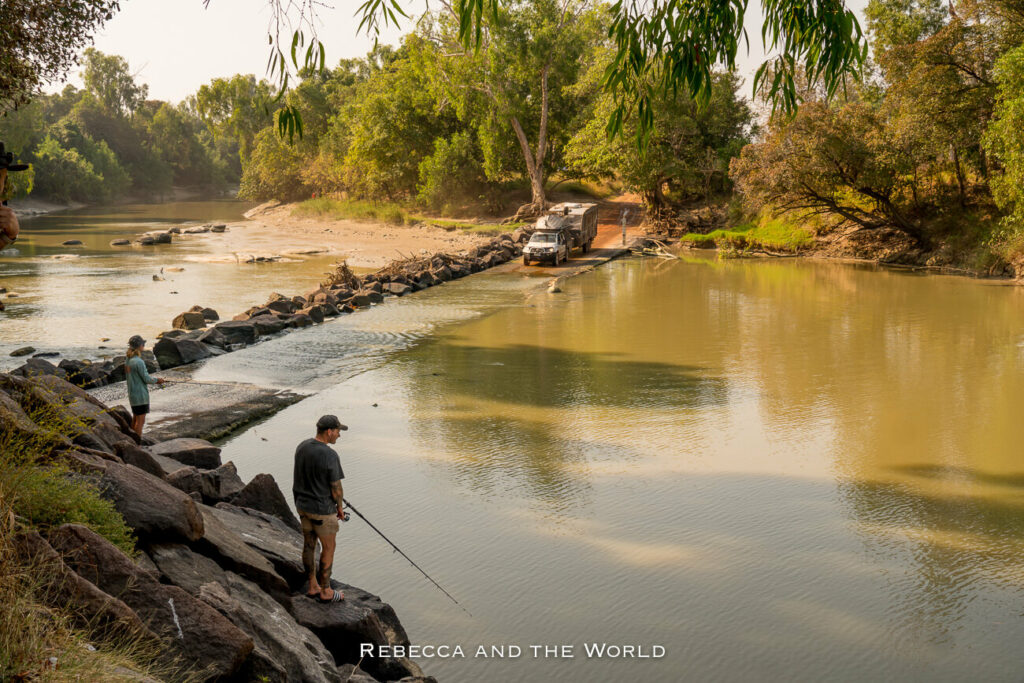
8. Guluyambi Cultural Cruise
Kakadu has a lot to offer when it comes to adventure and exploration, but it’s also a special place for the Traditional Owners of this land. The Guluyambi Cultural Cruise is a must-do experience to gain insight into the Indigenous way of life in Kakadu.
The one-hour cruise takes you along East Alligator River, which separates Kakadu and Arnhem Land, with a knowledgeable guide providing commentary on the history and traditions of the local people.
You’ll even get to go on the Arnhem Land side of the East Alligator River for a hunting and gathering display.
It’s one of the most interesting things to do in Kakadu National Park if you’re interested in learning about culture.
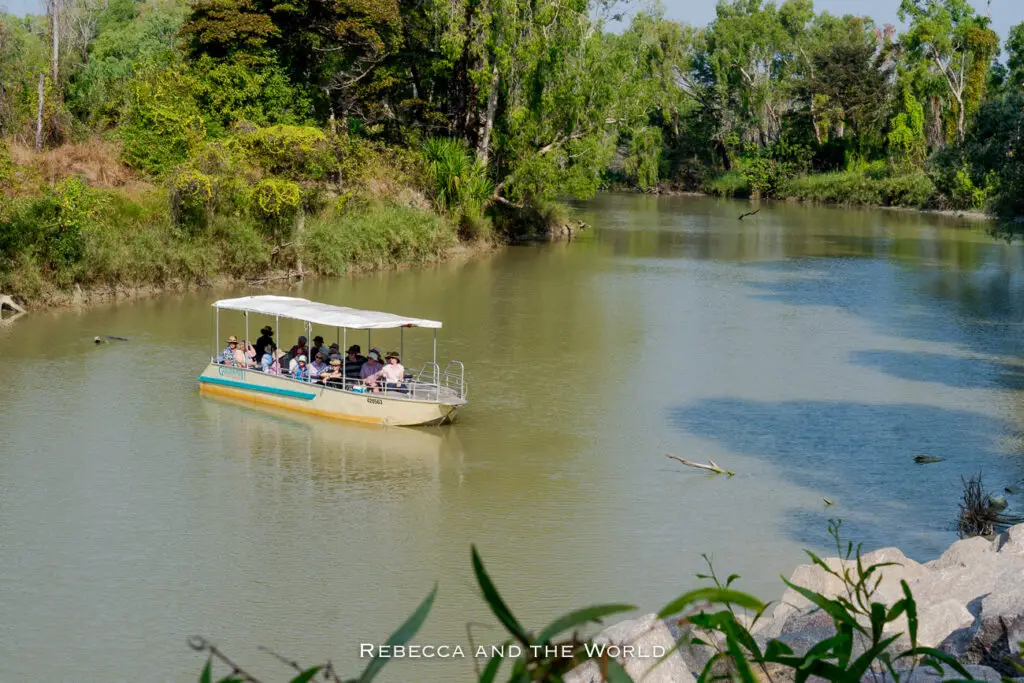
9. Manngarre Rainforest Walk
After you’ve gazed at rock art or spotted crocs, take one of the three loop trails that make up the Manngarre Rainforest Walk.
The trails range from 0.6 kilometres to 1.5 kilometres, and meander through the monsoon rainforest.
10. Injalak Arts Centre
This remote art hub is in West Arnhem Land, just a 25-minute drive from Ubirr. This centre has been around since 1989.
More than 200 artists make and sell beautiful weavings, bark paintings, jewellery, carvings and textiles. Everything here is unique – and ethically sourced and sold.
You will need to arrange permits to visit Gunbalanya (the community where Injalak Arts is located). Information about how to do this is online here.
Burrungkuy (Nourlangie) region
This region is home to incredible art sites and more stunning lookouts.
11. Burrungkuy (Nourlangie)
This area has a long history of occupation – more than 20,000 years.
Follow the 1.5km return trail – a mix of earth trails and boardwalks – to see rock art painted over thousands of years in shelters used by Aboriginal people.
At Burrungkuy (Nourlangie), you’ll see paintings of people, kangaroos and fish, as well as the famous Lightning Man. Namarrkon (Lightning Man) is depicted as a grasshopper-like creature who makes the powerful lightning and thunderstorms every summer.
You’ll also see Nabulwinjbulwinj, a dangerous spirit who eats women after killing them. You’re asked not to photograph this rock art site.
If you continue on the trail, you’ll reach Gunwarrdehwardeh (also spelt Kunwarddewardde) Lookout. From here you can see for miles over Kakadu National Park, including over to where Namarrkon lives. It’s said that if his home is disturbed, trouble will come.
It’s a really peaceful place and the only noises you’ll hear (other than people) are the sounds of birds and the wind gently swishing the trees.
If you have the energy (and food and water supplies), you can continue from here onto the Barrk Walk, a 12km loop that’s a difficult hike. It loops up with the Nanguluwurr rock art site. We would have loved to do this – but weren’t prepared with enough water.
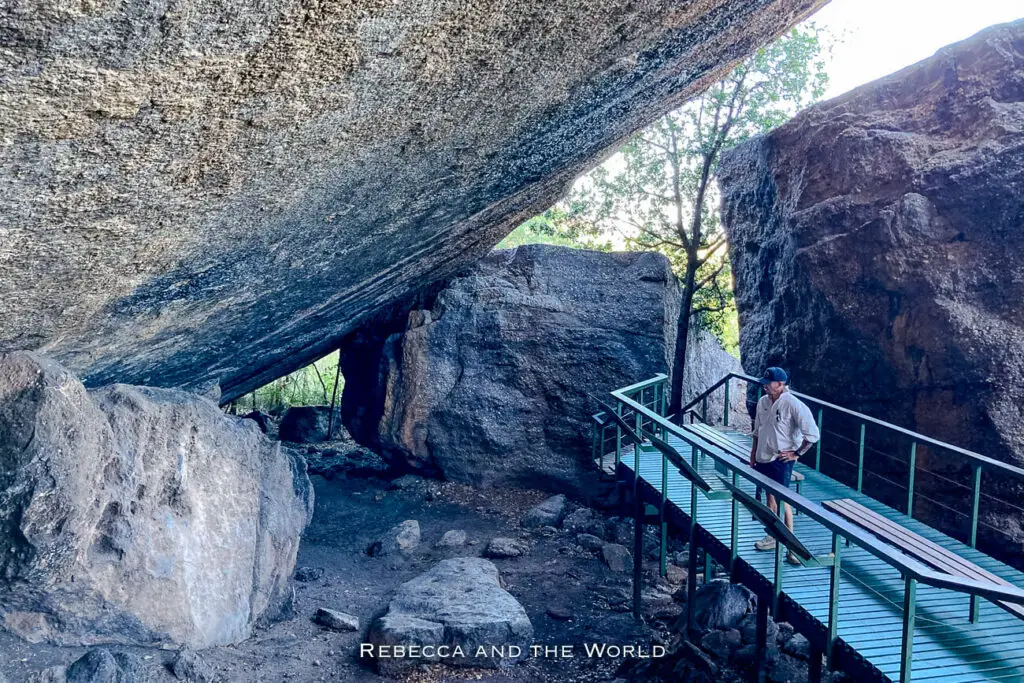
12. Nawurlandja Lookout
Nawurlandja Lookout is at the end of a short walk (600m return). It’s a steep-ish track over the rock face – I was puffing by the time I reached the top!
This lookout has spectacular views over Anbangbang Billabong, Burrungkuy (Nourlangie) and Arnhem Land.
It’s particularly stunning at sunset, with the sky turning orange and pink and purple. We found it was much quieter here than Ubirr at sunset.
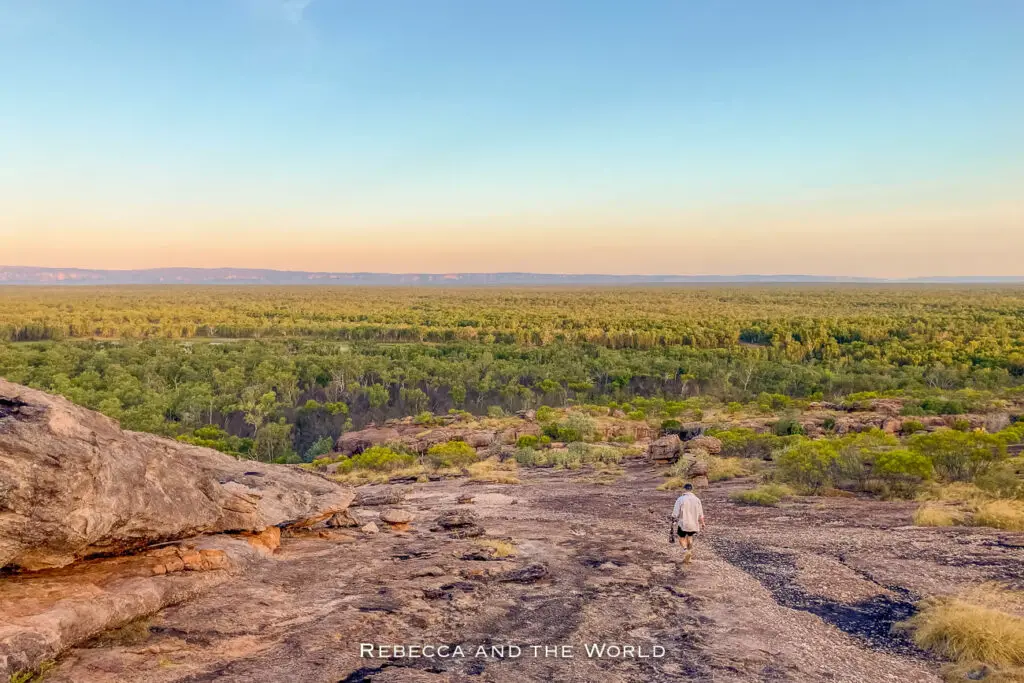
13. Nanguluwurr
This was one of our favourite rock art sites in Kakadu – not only for the fascinating art but also because we had it all to ourselves. I’m not sure if that’s common, but it was pretty incredible to be able to take in the history here without being disturbed by any other visitors.
It’s an easy, 4km return walk to the Nanguluwurr art gallery. It’s here you’ll see the painting of a masted sailing ship – a representation of early contact between Aboriginal people and Europeans.
There are also handprints and the typical animals in x-ray style, all painted in ochre.
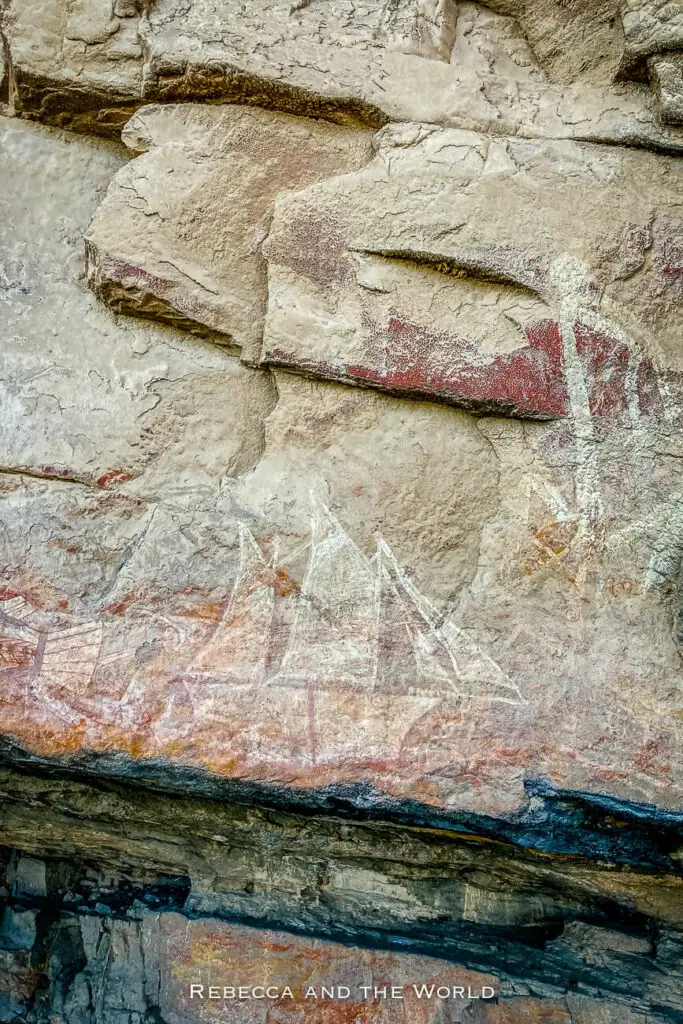
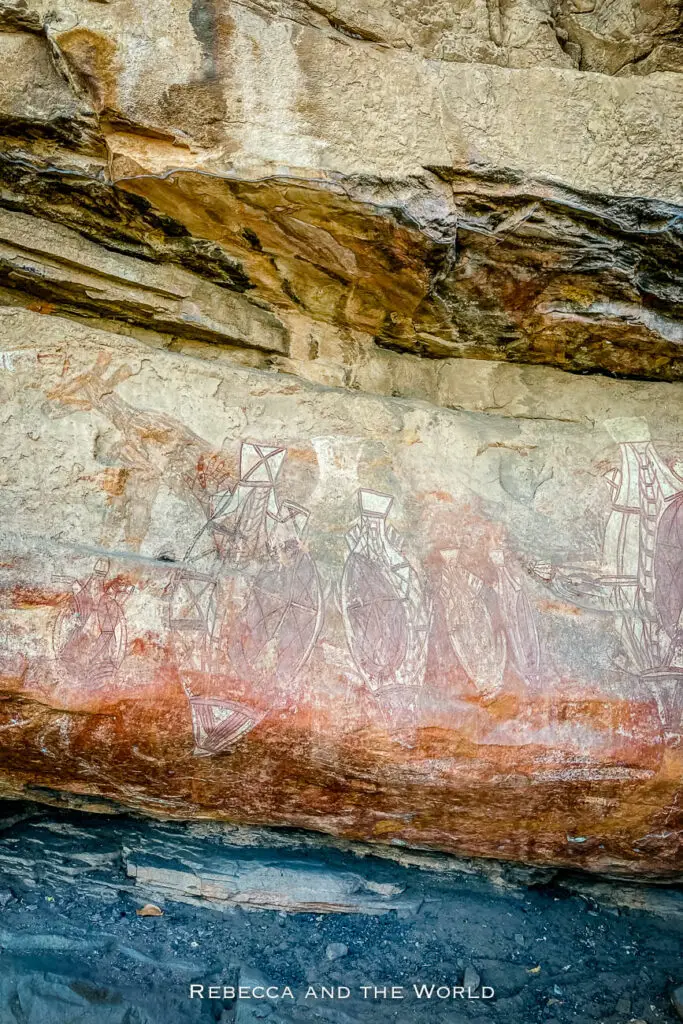
14. Anbangbang Billabong
Not far from Burrungkuy (Nourlangie) is Anbangbang Billabong, a peaceful and picturesque wetland. It’s a great spot to see birdlife (and probably some crocodiles, too – although we didn’t see any here).
Take the 2.8km easy loop around the billabong, passing through paperbark forest and savanna woodlands.
It’s also incredibly peaceful and usually not crowded at all. There are some picnic tables here.
I recommend coming here in the afternoon, either before or after visiting the rock art sites at Burrungkuy (Nourlangie), and then heading up to Nawurlandja Lookout for sunset.
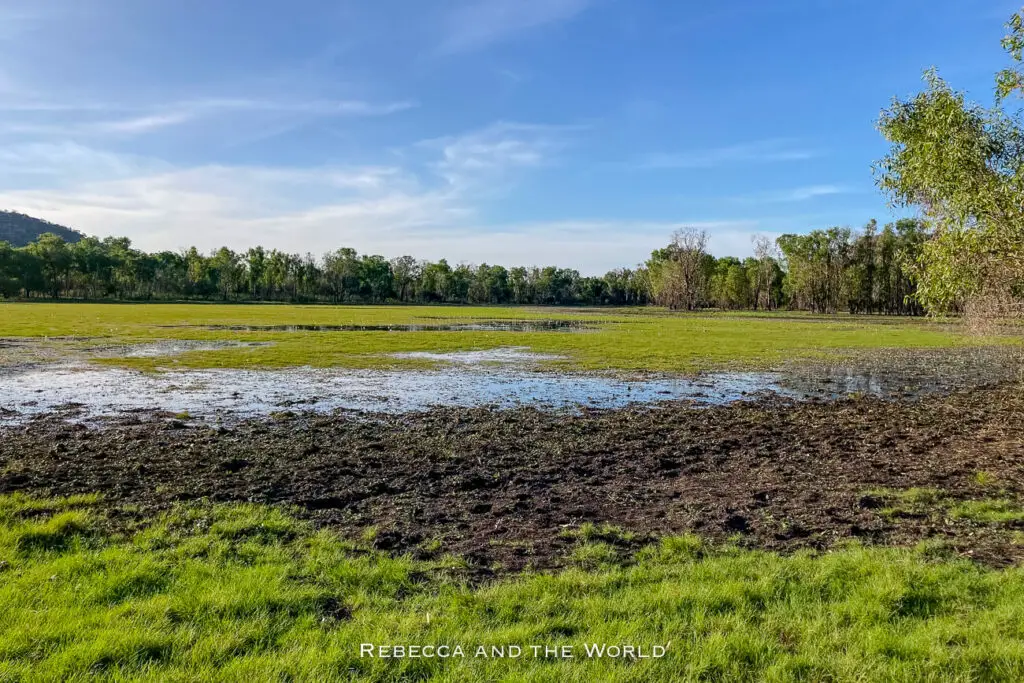
Yellow Water (Ngurrungurrudjba) region
Apart from the Jabiru region, this is the busiest part of Kakadu. Cooinda Lodge has a range of accommodation, so this can be a good base to explore the southern part of the park.
15. Yellow Water Cruise
After exploring the land and learning about its history, it’s time to take a cruise on Yellow Water Billabong (Ngurrungurrudjba) and the South Alligator River.
This 1.5 hour boat ride is one of the must-do experiences in Kakadu National Park. It’s such an informative tour and the scenery is remarkable.
You’ll cruise through beautiful wetlands teeming with wildlife – from birds to saltwater crocodiles. We even spotted several water buffalo roaming the floodplains.
Our guide, Jess, was excellent. She shared so much about the flora and fauna of the region, as well as the cultural significance of Yellow Water Billabong to the Traditional Owners, the Bininj/Mungguy people. We learned some of the traditional names of the animals as well.
Crocs are of course the highlight of this boat trip. I started counting them at the start but gave up after a while – they are everywhere. There are estimated to be more than 10,000 crocodiles in Kakadu.
But there was also a huge focus on fascinating birds. We saw magpie geese, rainbow bee eaters, a few white-bellied sea eagles (the second-largest bird of prey) and the nankeen night heron, which we learned loves to stare at itself in the water.
I recommend taking a sunrise or sunset cruise for the best light and to get out of the heat of the day (although the boats are covered). It was incredible to see the huge orange sun sinking over the water.
Book well in advance – these tours sell out very quickly.
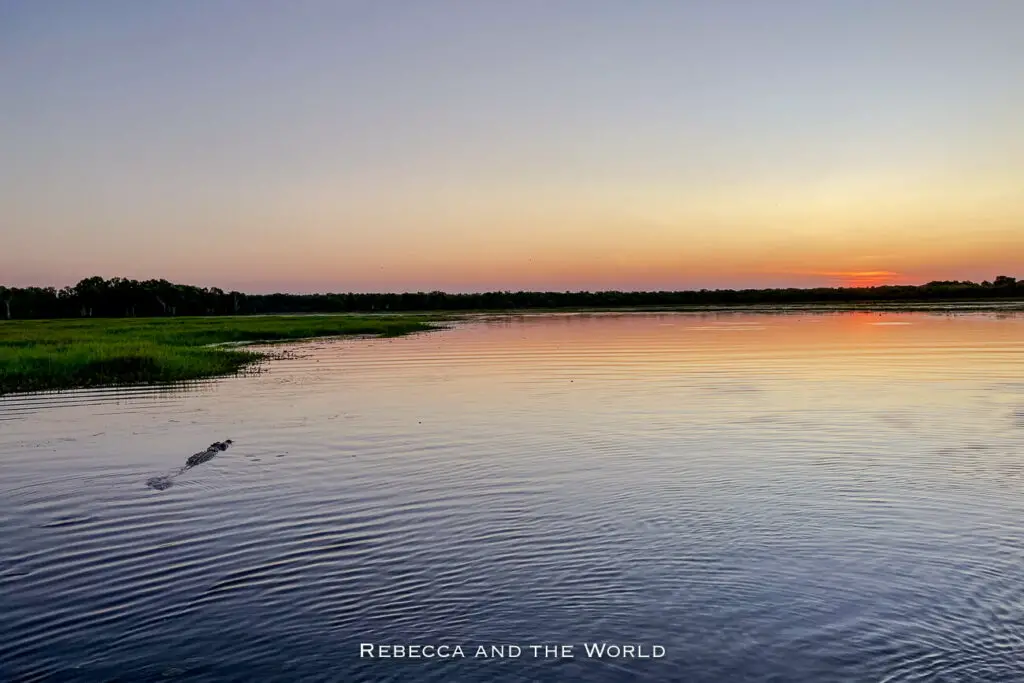
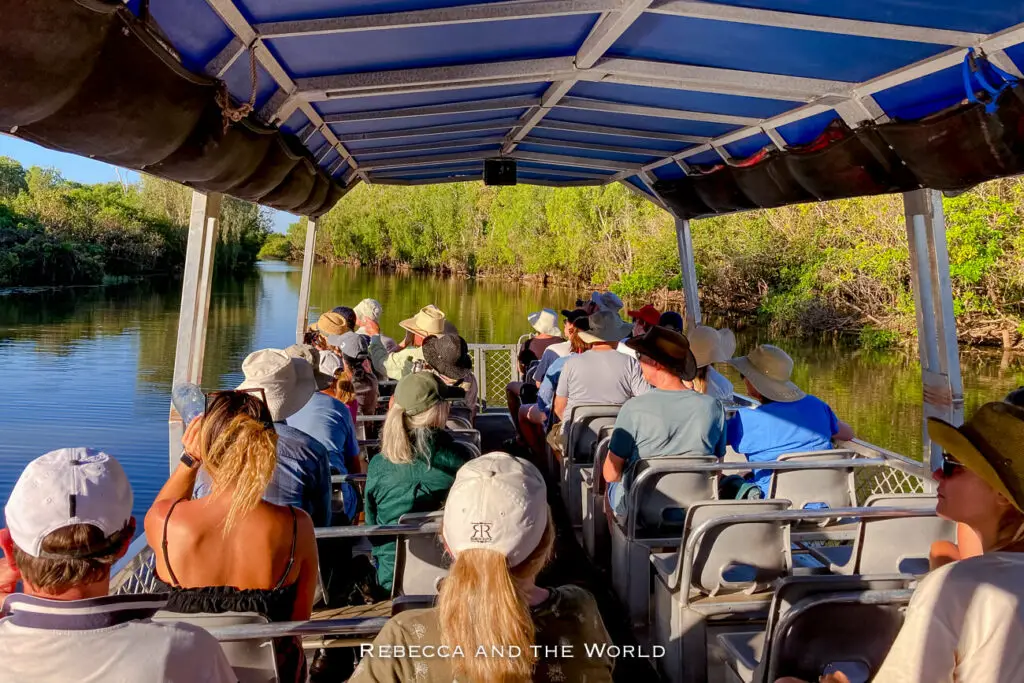
16. Warradjan Aboriginal Cultural Centre
The Warradjan Cultural Centre focuses on the Aboriginal heritage of Kakadu through interactive displays and exhibits.
Warradjan means pig-nosed turtle, and this impressive building is built in the shape of this marine reptile.
There are informative exhibits on the moiety system, the six different seasons of Kakadu, the wildlife of Kakadu and Creation stories.
But there are also displays about the arrival of the balanda (Europeans) and the history of mining in Kakadu, both of which have had devastating impacts.
Top tip! The building is also air-conditioned, so it’s a nice place to escape the heat of the day and learn about the rich culture and history of Kakadu.
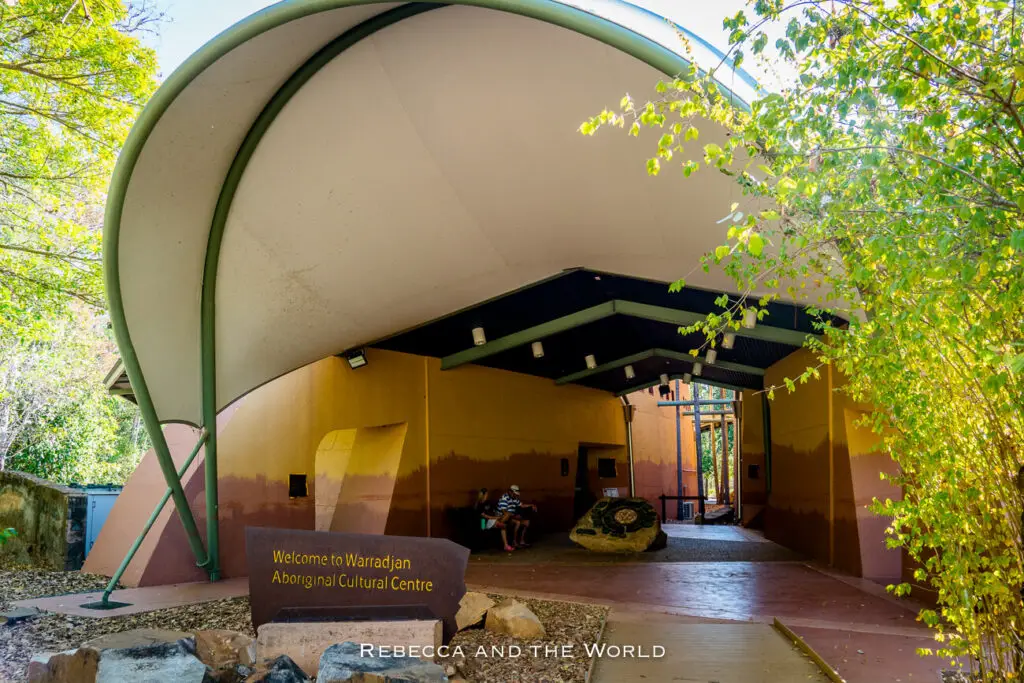
17. Cooinda Lodge
If you’ve been camping in Kakadu (as we were), then Cooinda Lodge will be a welcome stop.
There’s a restaurant here as well as food tents at night, a fuel station, a store selling snacks and drinks – and it’s also the place where you can book tours.
There’s also (very) limited phone reception to catch up – we could only ever get patchy 3G coverage.
18. Take a scenic flight over Kakadu National Park
For a bird’s eye view and a truly breathtaking experience, consider taking a scenic flight over Kakadu National Park.
You’ll be able to see the vastness of the landscape, the winding rivers, and even spot wildlife from above.
This is the best way to see Kakadu in the Wet – when you may not be able to get on the ground but will be able to see waterfalls at their mightiest from above.
There are several companies that offer scenic flights over Kakadu, so shop around and compare prices and itineraries.
Flights depart from Cooinda and Jabiru.
Jim Jim / Twin Falls region
The highlight of Kakadu are these two waterfalls – Jim Jim and Twin Falls Gorge.
19. Jim Jim Falls
Jim Jim Falls is a stunning waterfall located in the southern region of Kakadu National Park.
The falls can only be accessed by 4WD vehicles and require a short hike to reach. But the effort is well worth it once you see the crystal clear water cascading over the red cliffs.
During the dry season, the waterfall dries up from about July, but you can still hike to the plunge pool at the bottom of the cliffs. Salties have been known to appear here, so keep an eye out – and check with the rangers before you take a dip!
The dirt road to Jim Jim Falls can be pretty hairy. Friends we met on our trip had their back window smashed by rocks, so make sure to cover it with cardboard or a yoga mat, just in case!
Don’t have a 4WD? Take a 4WD day tour.
During the wet season, the falls can become impassable and dangerous due to heavy rainfall and flooding. So your best bet at this time of year is to see the falls via a scenic flight.
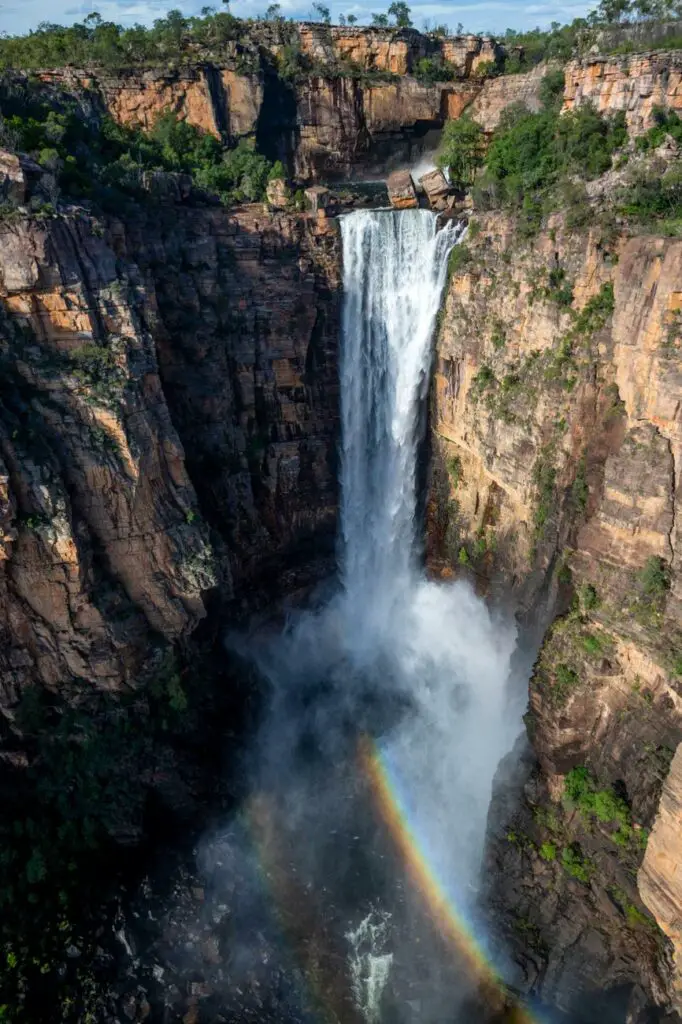
20. Twin Falls
Twin Falls is another must-see attraction in the Jim Jim / Twin Falls region of Kakadu National Park.
This spectacular 150-metre-high waterfall is surrounded by towering cliffs. The waterfall is just a trickle during the dry season, but it’s still worth a walk – the scenery is incredible.
While the walk to the base of the falls is currently closed for an upgrade, you can hike along the top along the Twin Falls plateau walk. This 6km return trail has amazing views down into the gorge and the falls.
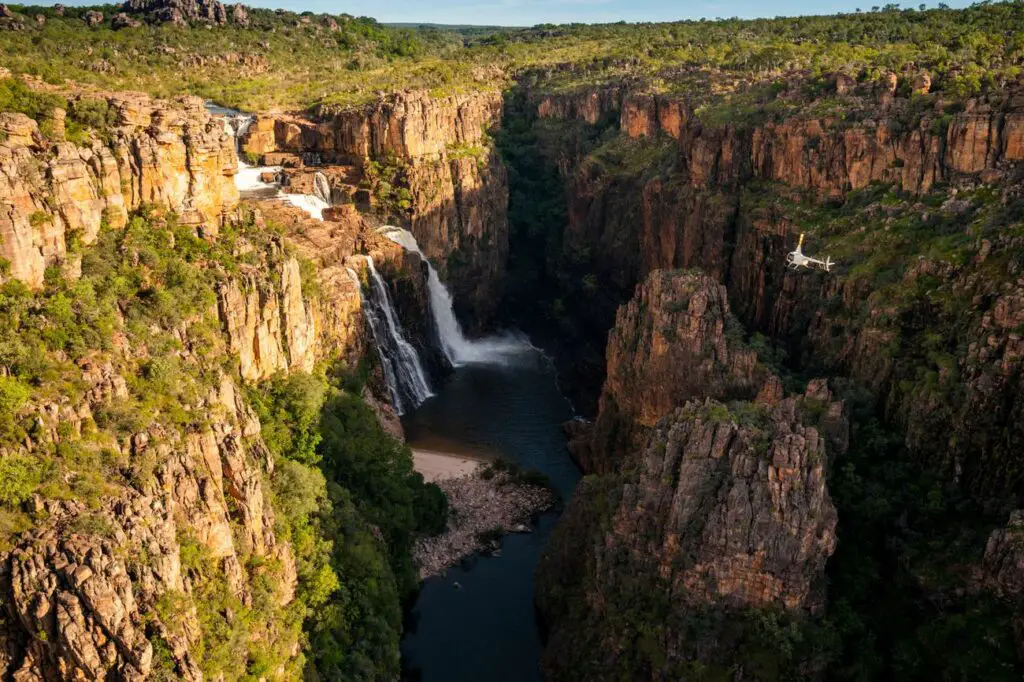
Mary River region
The southernmost region of the national park is easily accessible from the Stuart Highway and is where you’ll find some of Kakadu’s best swimming holes.
21. Maguk Falls
Maguk Falls is a stunning swimming spot – my favourite place in Kakadu National Park.
While the waterfall isn’t as high as Jim Jim or Twin Falls, this place is still spectacular. The water cascades over the rocks and into a deep plunge pool, a much-needed escape from the heat.
To reach Maguk Falls, you’ll need to take a short 1-kilometre hike through lush rainforest, which then gives way to rocks and boulders – watch your step in this part!
Once at the falls, you can swim in the crystal clear waters or relax on the rocky bank. It’s so easy to while away a few hours here. Bring a pool noodle or something inflatable to laze about on.
The road to Maguk is an unsealed, 4WD track, but we saw 2WD cars tackling it easily in the dry season.
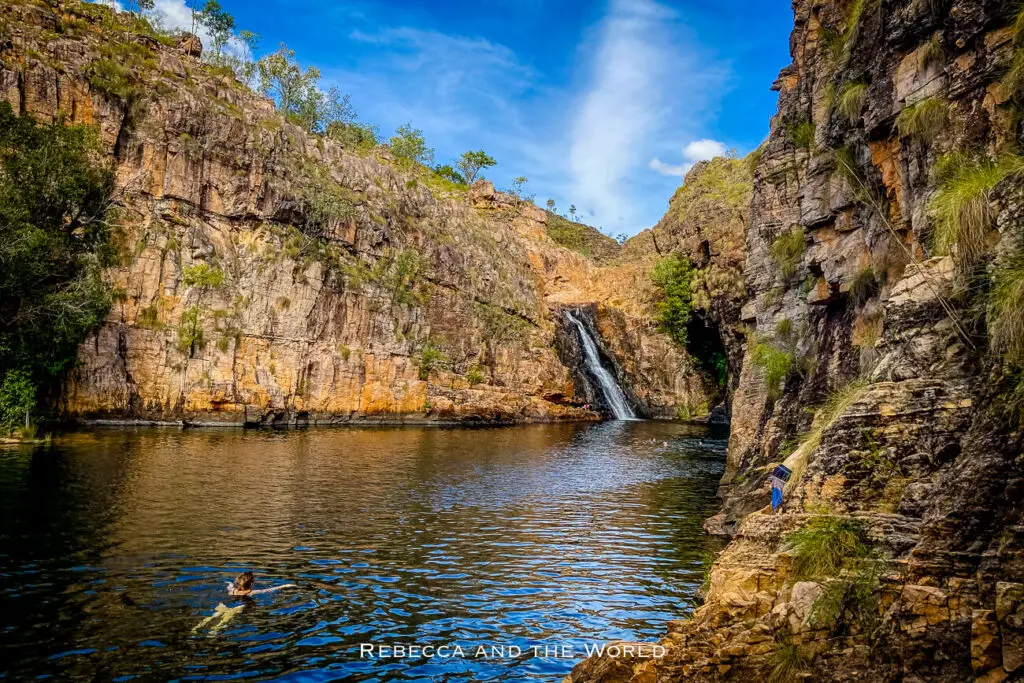
22. Motor Car Falls
Head to Motor Car Falls, one of the lesser visited spots in Kakadu.
The 7.5km return hike is one of the three Yurmikmik Walks.
Motor Car Falls is best during the wet season – although it can close due to flooding in the peak of the season, so you need to time your visit right.
However, it’s still worth visiting during the dry season. While the waterfall won’t be impressive (and may not be flowing at all), the walk is a chance to spot birds and wildlife.
23. Gunlom Falls
Gunlom Falls is where you’ll get the ultimate Instagram shot.
The walk to the falls takes you through lush monsoon forests, before opening up to a beautiful viewpoint over the valley below.
The falls themselves are a series of natural rock pools, perfect for swimming and cooling off on a hot day.
But the real highlight at Gunlom Falls is the infinity pool at the top of the falls. This natural infinity pool overlooks the South Alligator River and offers unbeatable views for a truly unique swimming experience.
Unfortunately, Gunlom Falls was closed when we visited – and has been for some time. So, check the Kakadu status page for updates.
Kakadu itinerary ideas
So, you’ve now seen that there’s a LOT to do in Kakadu. To help you make the most of your time here, I’ve pulled together a couple of suggested itineraries. These are Kakadu self-drive itinerary ideas, as I’ve assumed you’re visiting independently and not on a tour.
3 days in Kakadu National Park
Three days will give you a good taster of Kakadu National Park.
Day 1:
- Drive from Darwin to Jabiru.
- Stop by Bowali Visitor Centre to pick up a Kakadu Visitor Guide and chat with the rangers.
- Head to Cahills Crossing for a chance to spot crocodiles and other wildlife.
- Catch the sunset at Ubirr Rock, where you can see ancient rock art and enjoy panoramic views of the park.
Stay: Mercure Kakadu Crocodile Hotel, hotel/camping at Aurora Kakadu Lodge or Malabanjbanjdju or Burdulba campgrounds (Merl campground is the closest to Ubirr – but it’s known for having a LOT of mosquitos).
Day 2:
- Visit Burrungkuy (Nourlangie) to see ancient rock art and learn about the local Indigenous history.
- See more rock art at the Nanguluwurr art gallery.
- Head up the Nawurlandja Lookout for stunning views or take a stroll around Anbangbang Billabong.
- Take a sunset cruise on Yellow Water Billabong to see the diverse birdlife and spot saltwater crocodiles.
Stay: Cooinda Lodge or camp at Mardukal campground.
Day 3:
- Visit the Warradjan Cultural Centre to learn about Indigenous culture and history.
- End your trip to Kakadu at one of the following swimming holes for a refreshing swim: Maguk, Gunlom (if it’s open) or Motor Car Falls.
- Head back to Darwin.
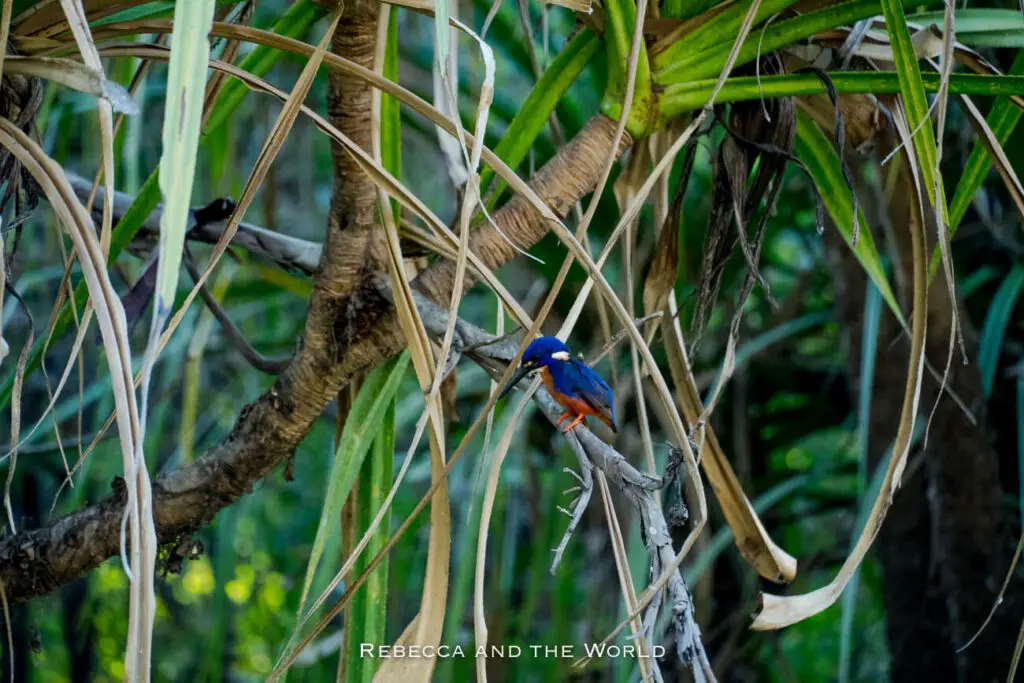
5 days in Kakadu
Five days is a great amount of time to explore more of Kakadu National Park.
Day 1:
- Drive from Darwin to Jabiru.
- Stop by Bowali Visitor Centre to pick up a Kakadu Visitor Guide and chat with the rangers.
- Head to Cahills Crossing to spot crocodiles.
- Catch the sunset at Ubirr Rock, where you can see ancient rock art and enjoy panoramic views over the floodplains all the way to Arnhem Land.
Stay: Mercure Kakadu Crocodile Hotel or camping at Aurora Kakadu Lodge or Malabanjbanjdju or Burdulba campgrounds (Merl campground is the closest to Ubirr – but it’s known for having a LOT of mosquitos).
Day 2:
- Take a Guluyambi Cultural Cruise on the East Alligator River to see more wildlife and learn about the local Aboriginal culture.
- Head out to Injalak Arts to see incredible Aboriginal art (arrange your permit ahead of time).
- Head up to Nawurlandja Lookout for stunning sunset views.
Stay: Cooinda Lodge or camp at Mardukal campground.
Day 3:
- Visit Burrungkuy (Nourlangie) to see ancient rock art and learn about the local Indigenous history.
- See more rock art at the Nanguluwurr art gallery.
- Visit the Warradjan Cultural Centre to learn about the local Indigenous culture and history.
- Take a sunset cruise on Yellow Water Billabong to see the diverse birdlife and spot saltwater crocodiles.
Stay: Cooinda Lodge or camp at Mardukal campground.
Day 4:
- Explore the Jim Jim and Twin Falls area, taking in the impressive waterfalls and stunning landscapes.
Stay: Cooinda Lodge or Karnamarr Campground.
Day 5:
- End your trip to Kakadu at one of the following swimming holes for a refreshing swim: Maguk, Gunlom (if it’s open) or Motor Car Falls.
- Head back to Darwin.
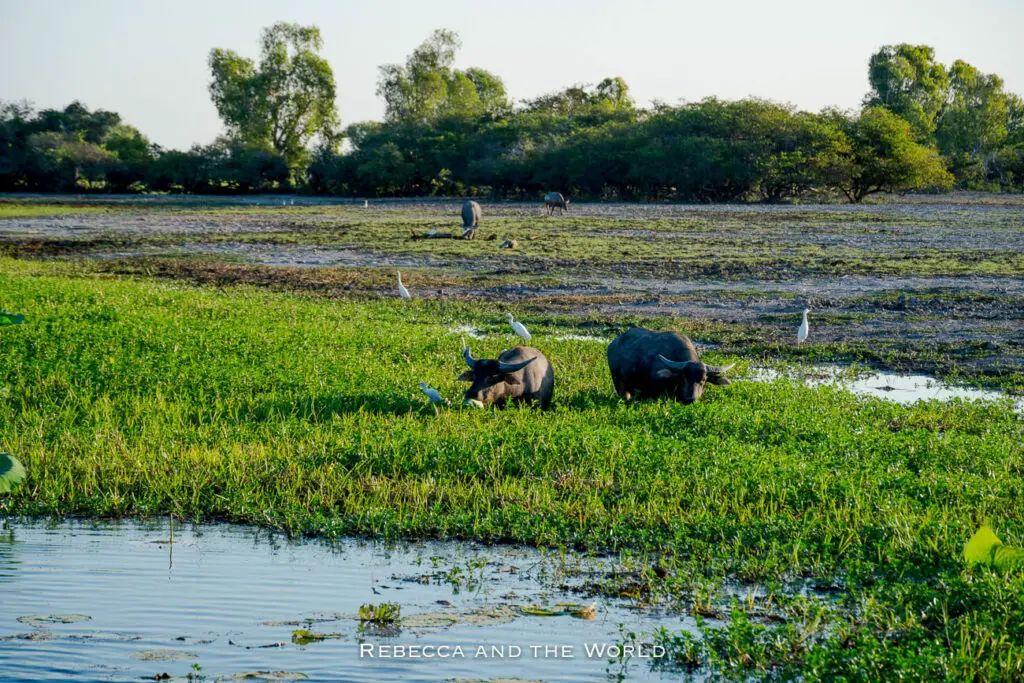
What to pack for Kakadu
Here are a few things you should bring on your visit.
- Kakadu Park Pass
- Hiking boots or sneakers
- Tevas or other water shoes – especially useful for the Maguk hike
- Water bladder (I prefer a water bladder to a bottle when I’m hiking)
- Sunscreen (at least SPF50+)
- Insect repellent
- Hat and sunglasses
- Day pack
- Swimming gear
- Pool noodles or inflatable – a must for the swimming holes!
- Food, snacks and plenty of water
How to get to Kakadu National Park
Kakadu National Park is located in the Northern Territory of Australia, approximately 150km southeast of Darwin. There are a few ways to get there:
- Self-drive – this is the most popular option and gives you the flexibility to explore at your own pace. Rent a car in Darwin (or in Katherine) and make the 1.5 hour drive to the park entrance (it’ll take you about 2.5 hours to get to the Bowali Visitor Centre). Avoid driving to Kakadu from Darwin in the dark – there are lots of animals, including wild buffalo, that cause hazards.
- You can also visit Kakadu on an Adelaide to Darwin road trip or a Top End road trip!
- Organised tour – there are several companies offering day trips or multi-day tours to Kakadu from Darwin.
Darwin to Kakadu tours
There are a few Darwin to Kakadu day trip tour options. Most include pick up and drop off from your accommodation in Darwin, as well as lunch and knowledgeable guides.
Best time to visit Kakadu
The best time to visit Kakadu National Park is during the dry season, which runs from April/May to October. This is when the weather is cooler and there’s less chance of heavy rains or floods. Some parts of the park may still be closed earlier in the season, so July/August/September are good months to visit.
However, Kakadu during the wet season (October to April) can be spectacular. The monsoonal rains mean the waterfalls are at their thundering best and animals are on the move. Just be aware that some areas of the park may be closed during this time due to flooding.
The Bininj/Mungguy actually recognise six different seasons, and have used their knowledge over thousands of years to live in harmony with the land.
Keep in mind that during the dry season is when burn-offs can take place. This is an important part of caring for the land. There were burn-offs when we were there, but most of these happened overnight so we only had to deal with a bit of smoke.
Time your trip with the Taste of Kakadu festival, which celebrates bush food. Over a weekend, you can experience traditional bush tucker, cooking demonstrations, music and cultural performances. In 2024, the festival will be 24-26 May.
The Kakadu Dird (full moon) Feast also looks fabulous. A four-course meal under the stars celebrates bush tucker and the six seasons of Kakadu.
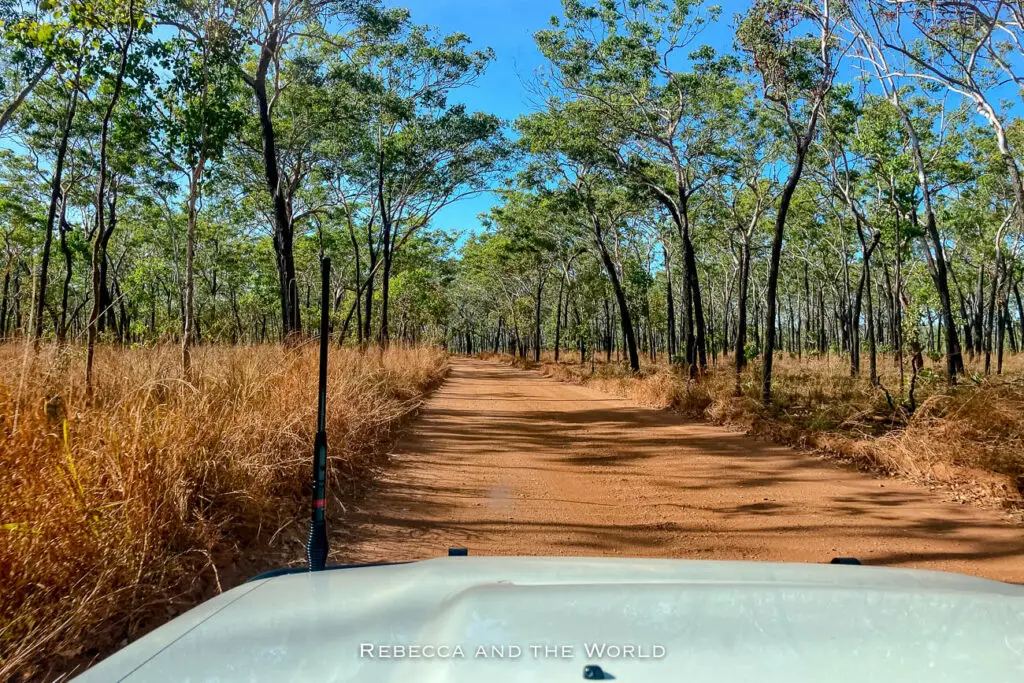
Where to stay in Kakadu
Here are options for accommodation in Kakadu National Park – I’ve included places to stay across the park.
Camping in Kakadu
I highly recommend camping in Kakadu – there’s nothing quite like the tranquility of the evening, when the only sounds are birds and insects, and the occasional bellow of a buffalo.
There are a number of campgrounds located throughout the park. National park-run campsites come in three types: managed sites (with showers, toilets and an on-site manager), unmanaged sites (pit toilets, pay to an honesty box) and free sites (no amenities). You need to bring your own drinking water to all types of campsites.
During our time in Kakadu, we stayed at Djarridjin, Mardukal and Maguk campgrounds. A full list of campgrounds can be found online.
There are also campsites at some of the hotels, including Cooinda Lodge and Aurora Kakadu Lodge.
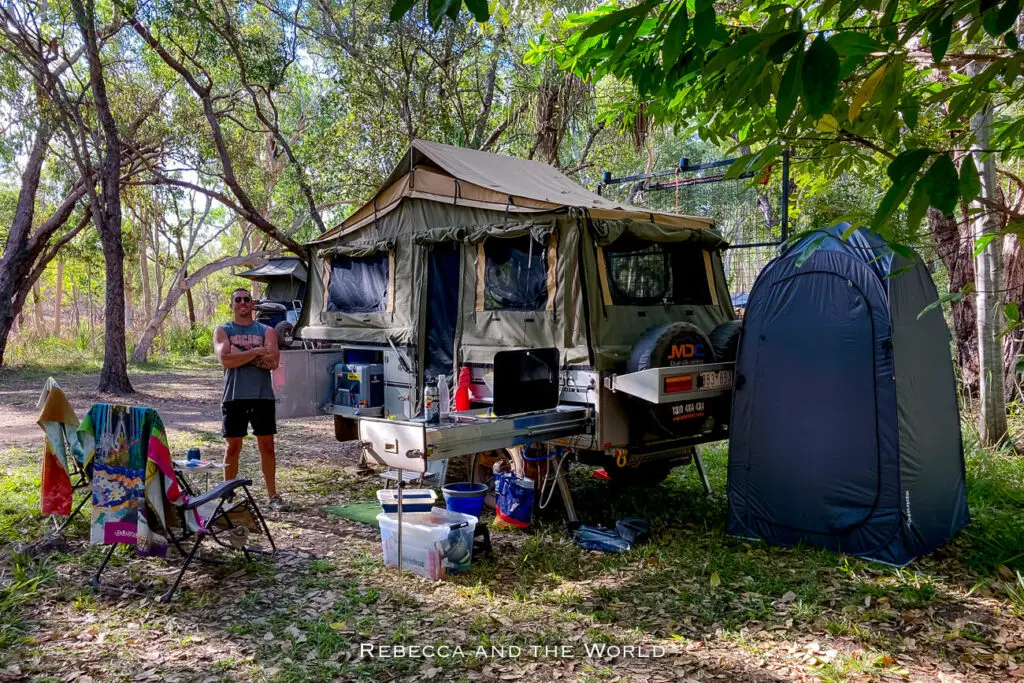
Kakadu hotels
Don’t have camping gear or want a bit of luxury? No worries – there are several hotels throughout the park.
The majority of hotels are in Jabiru:
- Mercure Kakadu Crocodile Hotel – in the shape of a croc, this full-service hotel has a pool that you’ll need at the end of a long day | Check prices online on Booking.com and Expedia
- Aurora Kakadu Lodge – has self-contained cabins (with AC) and lodge rooms, as well as powered and unpowered caravan and campsites. There’s a great pool and a bar/restaurant | Check rates online on Booking.com and Expedia
- Anbinik Kakadu Resort – has lovely suites and cabins, as well as “bush bungalows”, all of which are surrounded by lush vegetation | Check rates online
Cooinda Lodge Kakadu is further south. The resort has both hotel rooms and glamping tents, as well as access to a restaurant/bar, swimming pool, petrol station, shop and tours. | Check rates online on Booking.com or Expedia
Where to eat in Kakadu
Bring plenty of snacks with you – and if you’re camping, bring all your food and water as the stores at Jabiru and Cooinda Lodge are unsurprisingly pricier than supermarkets in Darwin.
The Manjmukmuk Restaurant and Bar at the Mercure Kakadu Crocodile Hotel in Jabiru has the usual hotel fare – but you can also try crocodile, barramundi or even buffalo curry.
At Cooinda Lodge, Barra Bar and Mimi’s Restaurant have dine-in and takeaway options. We had some fish and chips there and they were fine, if a little overprices (to be expected). At night during the dry season, a few food tents open and sell smoked meats and fish and chips to enjoy alongside the live music.
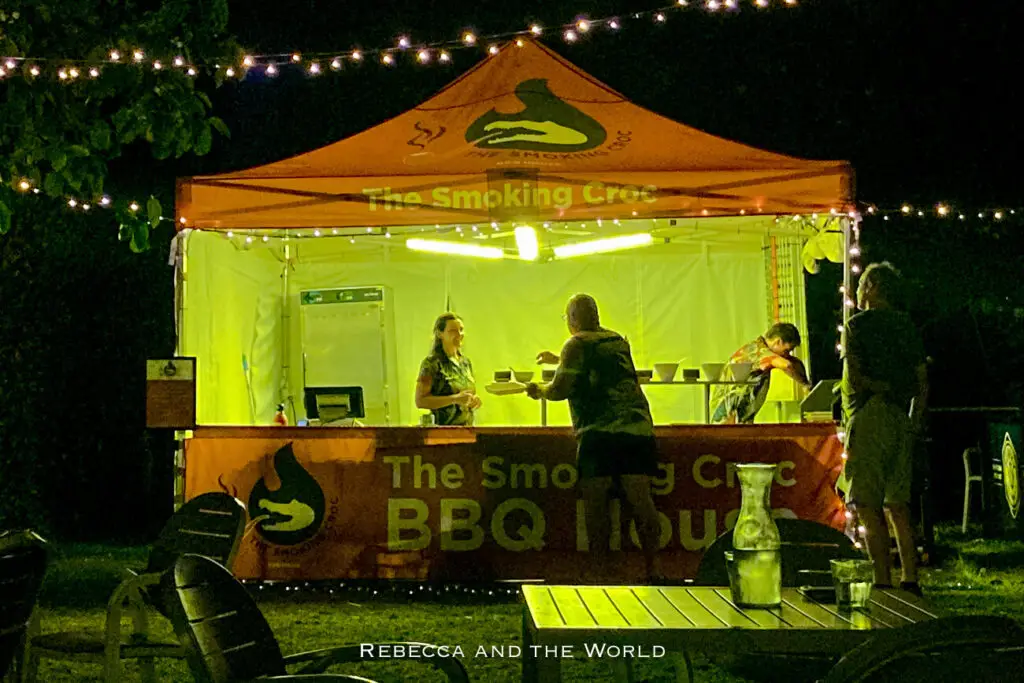
Wrap up: Things to do in Kakadu
Kakadu is one of the most stunning places to visit in the Northern Territory – and Australia. But it is huge, so you really do need to plan your trip there. Depending on how much time you have, pick a few areas and plan your Kakadu activities around those.
And while you may have a long to-do list while you’re here, make some time to simply relax in nature and appreciate the beauty of this World Heritage Site. It truly is a magical place.
What to do in Kakadu: FAQs
How many days do I need in Kakadu National Park?
At least 3 days are needed to see the highlights of Kakadu National Park. But ideally you should plan for a week to fully explore the area.
Are there crocodiles in Kakadu National Park?
Yes! There are more than 10,000 estuarine (saltwater) crocodiles in Kakadu. But salties can also be found in fresh water (something I learned while I was in Kakadu) so don’t think that there are no crocs there if you’re swimming in fresh water. Stay away from water unless a ranger has advised it’s okay to swim there. While rangers are always looking out for and removing crocodiles, you do enter the water at your own risk.
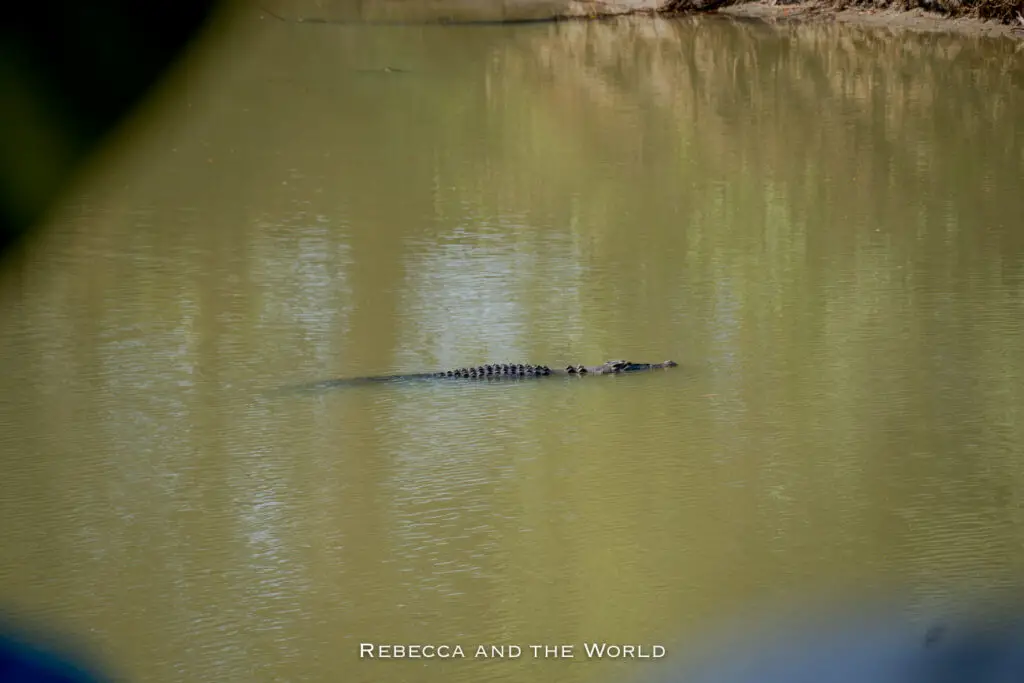
Do I need a 4WD for Kakadu National Park?
A 4WD isn’t necessary for most of the main attractions in Kakadu National Park. You can see most of the main sites I’ve listed in this article with a 2WD. However, there are some areas where you’ll need 4WD, like Jim Jim Falls and Maguk. If you’ve rented a 2WD, check with your rental car before driving on any 4WD tracks – some rental companies won’t let you take 2WD cars off road.
Can I visit Kakadu in the wet season?
Yes, you can visit Kakadu National Park in the wet season (October to April). In fact, it can be a stunning time to visit, when the waterfalls are at their peak and the rivers have flooded. Just be aware that some roads and sites may be closed due to flooding, and swimming may be restricted due to increased risk of crocodile encounters. Check the Kakadu website for closures.
Is Kakadu better than Litchfield National Park?
It’s difficult to compare Kakadu and Litchfield National Parks, as they’re both so different! While Kakadu is known for its vast wilderness, croc spotting and Aboriginal culture, Litchfield is the ultimate stop for stunning waterfalls and swimming holes. If you have time, it’s worth visiting both parks. Plus, with only about two hours’ drive between the two parks, it’s easy to do so. Other notable national parks in the area include Nitmiluk (Katherine Gorge) and Gregory National Park.
Did you find this article helpful? Consider buying me a coffee as a way to say thanks!
Have you been to Kakadu National Park?
Related posts
Before you leave… you might like these other Australia travel articles:
- The ultimate guide to Litchfield National Park
- The best things to do in Darwin, NT
- The ultimate guide to Nitmiluk National Park
- How to plan an epic Adelaide to Darwin road trip
- The best things to do in the NT
- The ultimate Top End road trip
- How to spend a few days in Alice Springs
- How to plan an epic Central Australia road trip
AUSTRALIA TRIP ESSENTIALS
- Book your flight to Australia online with Skyscanner. I like this site because it shows me which dates are cheaper.
- Find a great hotel in Australia. Check prices on Booking.com and Expedia online.
- Check out the huge range of day tours throughout Australia on GetYourGuide or Viator. There’s something for everyone.
- A copy of the Lonely Planet guide to Australia will be handy.
- One thing I always purchase is travel insurance! Travel Insurance Master allows you to compare across multiple policy providers, while SafetyWing is great for long-term travellers and digital nomads.
- Pack sunscreen (look for SPF50 or higher), a hat and sunglasses because the sun is hot!
PIN IT FOR LATER: VISIT KAKADU NATIONAL PARK
Save this guide to Kakadu National Park to Pinterest for later.
